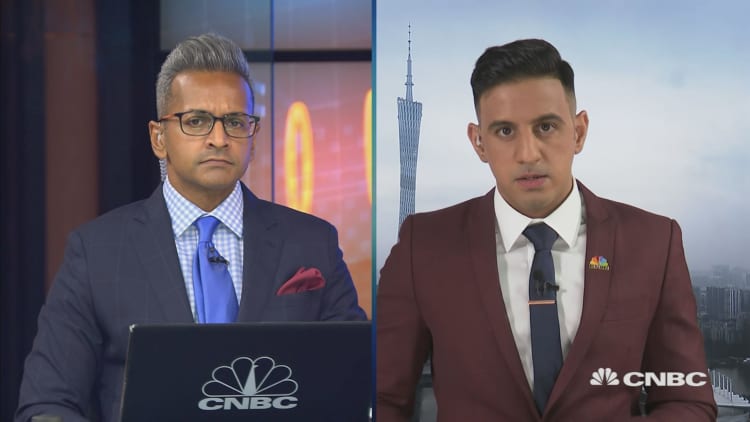A top Huawei executive said the Chinese company's mobile operating system is able to compete with Google and Apple — but analysts told CNBC that might be tough to achieve, especially in markets outside China where U.S. technology giants have a strong foothold.
"Huawei is in a position to deliver an ecosystem that is on par with Google's and Apple's ecosystems," Huawei's vice president of consumer cloud services in its consumer business, Eric Tan, said on Tuesday. "We have the confidence to be one of the top ecosystem developers in the world."
He was speaking about the company's own operating system, called the HarmonyOS, which was launched in August.
It comes as the Chinese technology giant attempts to forge a path ahead without American technology.
Huawei's smartphones have relied on Google's Android operating system for a number of years. But in 2019, the Chinese firm was put on a U.S. blacklist which restricted its access to American technology and meant it was no longer able to use licensed Android software on its handsets.
In response, Huawei launched its own operating system that same year.
On Tuesday, Huawei executives spoke about HarmonyOS, playing up its ability to be an operating system that can work across a number of devices rather than just smartphones alone, which could appeal to developers looking to make apps that work on different hardware.
The management also talked about the Huawei Mobile Services (HMS), a collection of various Huawei apps from maps to payments to its app store.
Huawei's claim about being able to deliver an ecosystem "on par" with Google's and Apple's is a big one, considering the company only launched its operating system less than a year ago.
But Tan backed up his comments by revealing that by the end of March, Huawei had 1.4 million developers on board — up 115% from the end of the first quarter of 2019.
In China, where Huawei is the biggest smartphone maker by market share, not having access to Google's Android is not a huge problem. That's because Google services, such as search, are blocked in the country and users can't really use them anyway. That also means Huawei's HarmonyOS has a chance of being successful in the domestic market.
So overall without marquee developers on board its going to be a tough sell.Neil ShahCounterpoint Research
However, in international markets where apps are built on Google's services — integrating maps or payments, for example — Huawei could find its HarmonyOS a tough sell.
"It won't be easy for Huawei to build up a library of premier applications outside of China, as many of them rely on Google for things like digital rights management, location, payment, and notification services," Bryan Ma, vice president of devices research at IDC, told CNBC.
Huawei was not immediately available for comment when contacted by CNBC.
"Developers oftentimes have to be selective on which projects they spend their time on, and a key factor in that decision-making is whether there is enough of a critical mass in the user base to justify the time and effort spent in porting applications over," Ma said.

Huawei's HMS is similar to Google Mobile Services and offers developers kits that can be used to integrate things like location services into apps. The Chinese firm said there are 60,000 apps using so-called HMS Core services, but it did not break down what countries or regions those are in.
Neil Shah, research director at Counterpoint Research, called the number of apps "limited" and said Huawei is still missing major apps.
"Outside of China, it will be struggle as most of the marquee applications come from big profile U.S. developers — Netflix, Facebook properties (Instagram, WhatsApp), Google apps, etc — which are obviously banned to collaborate with Huawei," Shah said.
"So overall, without marquee developers on board, it's going to be a tough sell."
Indeed, a number of major apps that are important in international markets are not on Huawei's app store, called the AppGallery. Users cannot download any Google apps or Facebook-owned services. Netflix or Spotify are not available either.
However, it does have the Amazon Shopping app, as well as video-sharing app TikTok, which is owned by Chinese firm ByteDance.
Huawei has expressed its desire to get Google apps onto the AppGallery.
"We hope Google services can be available through our AppGallery, just like how Google services are available through Apple's App Store," Eric Xu, rotating chairman at Huawei said in an interview with CNBC in March.
But this will be a challenge, according to Ma.
"Legal considerations aside, I find it highly unlikely that Google would publish its own apps into the AppGallery, as they have the same hooks into its services as third parties do. And if anything, they want to drive usage of their services," he said.


